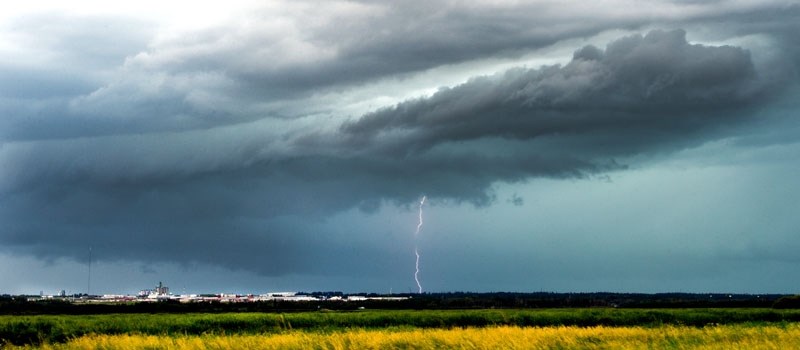This summer the St. Albert region was slightly soggier than usual with more rainy days and greater than usual precipitation.
Aug. 31 marked the last official day of the meteorological summer and by the numbers, the capital region received eight per cent more precipitation than usual over the months of June, July and August. On average 252.2 millimetres of precipitation falls during the summer but 2016 saw 233.2 millimetres drop from the sky.
“The amount of precipitation doesn’t tell the whole story,” Dan Kulak, a meteorologist with Environment and Climate Change Canada, said.
The amount of rainy days the region had was high, with 17 out of 30 days in August experiencing precipitation.
“The interesting thing is, even if you get a normal precipitation for the month, if you get rain on most days of the month it tends to seem wetter than it has been when you get it day after day,” Kulak said.
Although the summer saw more rainy days than usual, the precipitation did not stop the sun from beating down. The sunshine season saw temperatures that were much warmer than usual, with June clocking in as the fifth warmest June since meteorologists started measuring temperatures in the 1880s. Temperatures cooled off slightly for July, placing the month as the 12th warmest on record and August temperatures dropped into 22nd place.
Overall the summer was the fourth warmest on the books with an average temperature of 18 degrees Celsius, sitting above the seasonal average of 16.7 degrees Celsius.
Fortunately the rain and heat didn’t combine for too much severe weather. Overall there were a small number of severe weather warnings for the region as compared to the rest of the province. Across the province lightning strikes were up from 300,000 to around 500,000 but lightning is not categorized as a severe weather event.
The fall season is going to bring more of the same conditions to the area, with the meteorologist forecasting that September, October and November will be slightly warmer and slightly wetter than average. The predictions suggest that the seasonal average will be seven-tenths of a degree Celsius higher for that time of year.
“It will be slightly warmer and slightly wetter, but rainy is in the eye of the umbrella holder.” Kulak said. “It could be a few extra warm days anytime in the month, although this is totally beyond the ability to predict.”
Temperatures dipping in the fall months also mean the end of an active storm season. September typically sees a drastic drop in thunderstorms but there are still risks associated with the ones that roll through. Lightning is a year-round hazard and Kulak warns to not become complacent when it comes to the risk from thunderstorms.
“We have on average 300,000 lightning strikes in the province on average per year and we have on average roughly 10 tornados per year,” Kulak said. “A lightning strike is potentially just as deadly as a tornado, or even more so.”
Lightning typically strikes during storms that do not have severe weather and much of the risk happens when people do not seek shelter from smaller storms.
“The garden-variety regular afternoon thunderstorm is statistically more deadly than severe weather events because people stay outside far too long,” Kulak said. “The safety advice is if you can hear it, fear it, and if you can see it, flee it.”
The long weekend weather is expected to bring more rain with Saturday and Sunday being the warmest days at 12 degrees Celsius.




